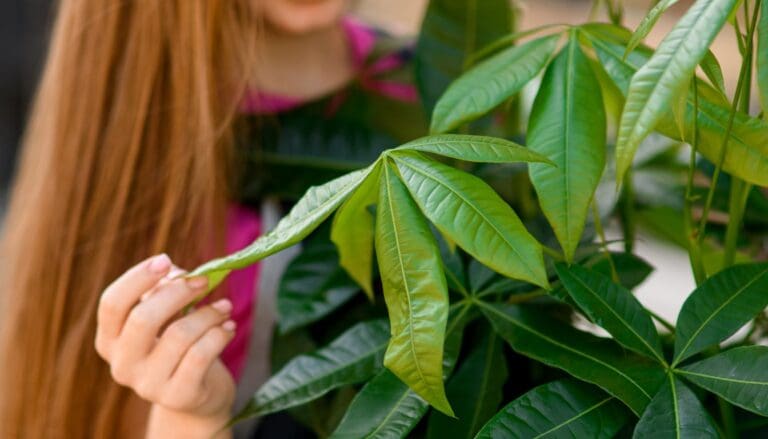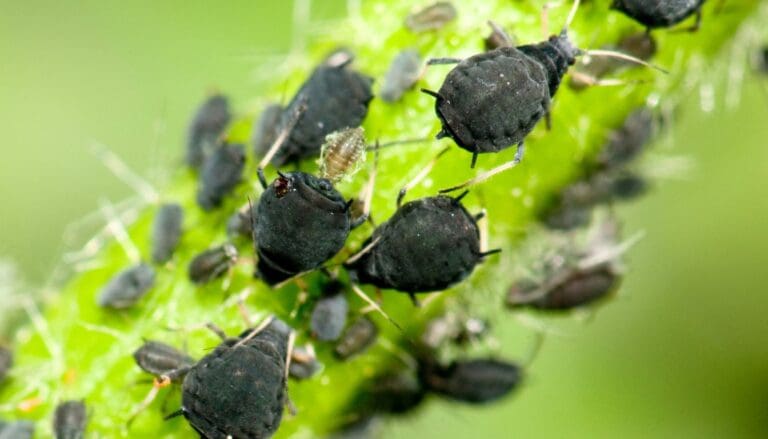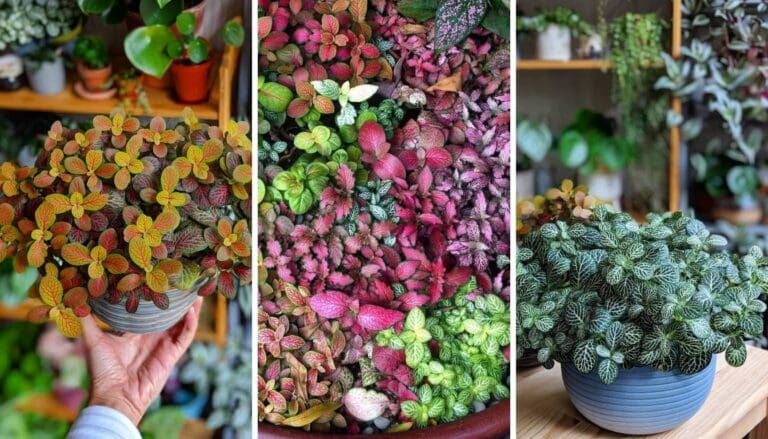How to Care for Your Heartleaf Philodendron: Secrets to Thriving Indoor Plants
If you’re looking for a houseplant that’s both forgiving and charming, you’ve hit the jackpot with the Heartleaf Philodendron.
Boasting lush, heart-shaped leaves, this plant is not just a pretty face—it’s one of the most low-maintenance friends you could add to your indoor jungle. 🌿😊
The Heartleaf Philodendron, also lovingly referred to as Philodendron hederaceum, is a tropical beauty that thrives on minimal care.
It’s incredibly adaptable and can even put up with my forgetful watering schedule—talk about a tenacious survivor!
And can we take a moment to appreciate how it effortlessly adds a touch of the tropics to my space? 🌴💚
As someone with a not-so-green thumb, I love that this plant doesn’t hold grudges.
It’s tolerant to a variety of lighting conditions and isn’t too fussy about its pot size either.
But what’s truly fantastic is how it tells me exactly what it needs—droopy leaves? I may have been a tad generous with the water. Crispy tips? My room’s a bit on the dry side.
It’s like having a conversation without words! Do you talk to your plants too, or is it just me? 😄🍃
Share your thoughts and experiences below, and let’s grow our plant-parenting knowledge together!
Please note: Simplify Plants is reader-supported. As an Amazon Associate, I earn from qualifying purchases made by our readers with no extra cost added to you all! Some links in the post are affiliate links and I get a commission from purchases made through links in the post.
Understanding Your Heartleaf Philodendron
Before we dive into the lush world of the Heartleaf Philodendron, let me highlight a couple of things: they’re charmingly heart-shaped and oh-so-easy to love!
Now, let’s get our green thumbs on the juicy details of what makes these plants special.
Characteristics of Heartleaf Philodendron
Imagine the perfect housemate—low maintenance, undemanding, and always sporting a cheerful green! That’s my Heartleaf Philodendron for you. Here’s a quick rundown of why they’re an absolute joy to have around:
- Leaves: You guessed it—heart-shaped, glossy, and a lush deep green that can bring life to any corner of your home.
- Growth: These beauties are climbers by nature, so give them a pole or let them trail down a bookshelf for that perfect cascading look. 🌱
Did you know they can grow pretty long? Mine’s almost reaching the floor from my bookshelf—talk about a living curtain!
History and Origin
Let’s take a short journey back in time to the warm, humid rainforests of Central America and the Caribbean. This is where my plant buddies first popped up.
Their resilience, I’d say, is as commendable as their beauty! Historically, they’ve thrived under the canopy of big trees, which means they’re champions at adapting to less-than-sunny spots in your home. 🌤️
Fun fact: did you know they’re also called Philodendron scandens? Sounds like a spell from Harry Potter, doesn’t it? Accio Philodendron! 😄
I must say, getting to know your Heartleaf Philodendron is the first step in building a beautiful green friendship.
So, have you spotted any unique characteristics in your own Heartleaf? Drop a comment and let’s compare notes!
Basic Care Guidelines

I’ve got the scoop on keeping your Heartleaf Philodendron thriving—the key is in understanding its needs, and it’s easier than you think! 🌿
Ideal Lighting Conditions
For my Heartleaf Philodendron, I always find a spot with medium to bright, indirect light.
They can still grow in low light, which makes them ideal for less sunny spaces. Did you know they’re even tolerant of the fluorescent lighting in offices? 💡
Watering Requirements
I give my Philodendron a drink when the top inch of soil feels dry—simple, right?
Remember, consistency is key, guys. Avoid letting the soil completely dry out. Thirsty plants are unhappy plants! 💦
Soil Preferences
I’ve found that a well-draining potting mix does wonders.
Mix in some perlite or peat moss to boost that drainage and aeration. The right soil makes all the difference for those fab roots! 🌱
Temperature and Humidity Needs
These tropical treasures love warm and cozy spots with temperatures above 50°F (10°C).
And humidity? The more, the merrier!
I sometimes mist mine or use a pebble tray to up the humidity game. It’s like giving your plant a mini tropical vacation! 🏝️
Ever had a Philodendron perk up your space, or are you looking to adopt one? Share your experience or send me a question down below. Let’s get our green thumbs chatting! 🌟
Plant Nutrition and Fertilization

We all want our green buddies to thrive, right? When it comes to feeding your Heartleaf Philodendron, a little goes a long way. Let’s dive into the diet plan for your leafy friend. 🌿
Fertilizer Types and Frequency
What’s on the menu for our Heartleaf Philodendron pals?
I like to go with a balanced liquid fertilizer, one that’s labeled with an equal ratio of nitrogen, phosphorous, and potassium (think 10-10-10 or 20-20-20). These numbers are like the plant version of a well-rounded meal.
I feed mine about once a month during the growing season (spring and summer) and then give them a little diet (no fertilizing) during the fall and winter.
It’s all about moderation; you don’t want to overfeed and end up with fertilizer burn, do we?
Signs of Nutrient Deficiency
Ever seen a philodendron throw a tantrum? I sure have, and it usually means it’s missing something crucial!
Yellowing leaves could be your plant’s way of saying, “Hey, I need more nitrogen!”
While stunted growth or color loss in those gorgeous leaves often points to a lack of potassium and phosphorous.
Keep an eye out for these signs; your green amigo will thank you. 😊
So, fellow plant enthusiasts, did you find these tips for a happy, healthy philodendron helpful? How do you feed your leafy friends? Share in the comments and let’s grow together! 🌱💚
Pruning and Maintenance

Keeping your Heartleaf Philodendron looking its best involves just a bit of pruning and regular maintenance. It’s like a quick spa day for your leafy friend that keeps it fresh and vibrant!
How to Prune Your Philodendron
Pruning is a snap!
I usually use a sharp pair of scissors to cut right below a leaf node—that’s where new growth will pop out.
Tip: Do this when you notice your Philodendron getting a bit leggy or after it’s clearly relished that spot by the window and is spilling out over the pot.
Here’s a quick step-by-step:
- Select a vine that’s looking overgrown.
- Cut right below a leaf node; a clean cut is best for the plant’s health.
- Wondering about the perfect time to prune? Anytime is a good time, as long as your plant is healthy—but I prefer spring or summer, when it’s in active growth mode. 🌱
Cleaning Your Plant’s Leaves
Dust on leaves? Not cool.
My Philodendron really perks up after a leaf cleaning—you should see the shine!
Take a soft, damp cloth and gently wipe each leaf to keep them glistening.
This isn’t just for looks, though; clean leaves can absorb more sunlight and breathe better. Think of it as clearing up your plant’s pores!
Regular Maintenance Schedule
Regular check-ups help your plant thrive. I like to stick to a simple routine:
- Weekly: Water (check the top inch of soil first!) and quick leaf dusting.
- Monthly: Deep leaf cleaning and a general health inspection for any pests or problems.
- Seasonally: Time for pruning! Snip away to encourage fresh growth or to keep the shape manageable.
Remember, these are more like guidelines than rules—you know your plant best!
Does it look thirsty? Is it dusty? A little extra care might be due.
How do you keep your Philodendron in tip-top shape? Let me know down in the comments, and we can trade tips! Don’t forget to share this with your plant-loving pals! 🌿✂️
Propagation Techniques

Have you ever looked at your Heartleaf Philodendron and wished you could create a new little green buddy from it?
Well, good news—propagating this lush plant is totally doable, and I’m here to walk you through it! Whether you’re a green thumb or a plant newbie, these simple steps will have you propagating like a pro. 🌱
Propagating Through Stem Cuttings
When I propagate my Heartleaf Philodendron, I swear by stem cuttings. It’s like giving your plant a little haircut and watching those trimmed bits grow into something wonderful.
Grab some sharp scissors or pruning shears, and let’s do this:
- Select a healthy stem with at least two to three leaves attached.
- Now, make a clean snip right below a leaf node—that’s where the roots will sprout from!
- You can pop the cutting in water or directly into soil. If you ask me, water’s great because you get to see the roots grow.
Quick Tip: Change the water weekly to keep it fresh and root-friendly!
Root Division Method
Looking for a different way to expand your Heartleaf family? Say hello to the root division method. It’s a bit more hands-on, but it’s super effective:
- Gently remove your Philodendron from its pot—I mean, who doesn’t like a little unwinding?
- With your hands, carefully separate the plant into smaller sections, ensuring each has roots.
- Rehome each section in their own pots with fresh soil, and voilà!
Remember, these babies will need a bit of extra TLC right after their big move.
Keep the soil moist but not soggy, and offer them that cozy, indirect light they adore.
Pest and Disease Management

Just like you, I adore my Heartleaf Philodendron, but boy, do they attract some pesky critters and issues. Let’s get down to brass tacks on how to keep your leafy friend happy and healthy.
Common Pests and Issues
From my experience, these lovable greens sometimes play host to uninvited guests. Here are the culprits:
- Aphids: Tiny, but they sure pack a punch.
- Mealybugs: White and cottony, a real mess.
- Spider Mites: The silent, web-spinning ninjas.
Prevention and Treatment Methods
Now, I’m all for avoiding problems before they start. Prevention is key!
Keep your eyes peeled for the first sign of trouble, and isolate any new plants before they join the gang.
Here’s how to keep it all in check:
- Healthy environment: These plants like a clean home, like you and me! Dust-free leaves and good air circulation make a difference.
- Regular inspections: Grab a magnifying glass and play detective once a week.
If you’ve spotted trouble, don’t panic! Treatments are here to save the day:
- Insecticidal soap or neem oil: a plant’s best friend.
- Wipe down: Gently clean leaves with a soft cloth.
- Natural predators: Release some ladybugs – they’re like the superheroes of the bug world!
Keep your plants peppy with these tips, and you’ll be winning the fight against pests.
And hey, if you’ve got some tricks up your sleeve, share the wisdom in the comments! 🌿🔍👀
Troubleshooting Common Problems

Ever found yourself puzzled by your Heartleaf Philodendron’s tantrums? Don’t worry; it’s all part of the plant parent journey. Let’s dive in and help them thrive!
Yellowing Leaves
Have you noticed some leaves turning yellow? A classic case of alarm!
Yellowing leaves can often mean overwatering. I like to stick my finger an inch into the soil; if it’s damp, hold off on watering.
Also, low light can make leaves yellower than my favorite sunshine emoji 🌞!
Wilting or Drooping
Is your Philodendron looking as droopy as me before my morning coffee?
Make sure your plant’s not standing in water; it hates soggy feet as much as we do on a rainy day!
Winter can also make your plant seem less perky – it’s their downtime, so reduce watering and let them chill.
Leaf Spotting
Leaf spotting on your Heartleaf Philodendron can be a head-scratcher.
Keep an eye out for fungal issues, often due to high humidity. Spotting can be a SOS sign for better air circulation. A little breeze from time to time keeps those leaves spot-free and happy!
Decorative Tips and Placement Ideas
When I’m jazzing up my space, my go-to green buddy is the heartleaf philodendron. It’s super versatile and oh-so-easy to make a visual impact with. Ready to turn some heads with your leafy friend?
Pot Selection and Upgrading
I always say a pot can make or break the look of your plant.
For my heartleaf philodendron, I choose pots that complement its heart-shaped leaves. Think bold colors or geometric patterns for a modern vibe.
When upgrading, remember these little climbers love room to grow! Swap out pots before it gets too cramped – your plant will thank you with lusher leaves.
- Size up: When roots peek out, it’s time for a bigger home.
- Material matters: Terracotta breathes; plastics are light and colorful.
Display Ideas for Interior Design
Now, where to put this trailing beauty? Sky’s the limit!
You could hang it up high and let those vines cascade down like a living curtain.
Or how about that empty shelf? Make it a lush corner by letting it snake around some books or alongside your favorite trinkets.
Get creative – train it to climb a wall grid or embrace a moss pole for that jungle-chic feel. I’ve even seen them styled as room dividers! So cool, right?
- Living art: Use command hooks to guide vines on a wall.
- Center stage: A plant stand can elevate your philodendron to new heights.
FAQs
What temperatures do my heartleaf philodendrons enjoy?
Honestly, they’re not too picky, but I like to keep mine in that sweet spot above 50°F (10°C). They totally appreciate the warmer, more humid vibes, just like their tropical homelands! 🌴
Can I grow them outside?
Hmmm, that’s tricky! If you’re not in the tropics, it’s a safer bet to grow these leafy friends indoors. Keeps them snug as a bug! 🏡
How often should I water these plants?
I’ve found that occasional watering does the trick. Just make sure the soil dries out a bit between waterings—think “thirsty, but not parched!” 💧
Do they need any special soil?
Nope! Any high-quality potting mix is like a cozy bed for them. Think of it as choosing a good mattress for yourself. 🛏️
When’s a good time to repot?
Watch for roots peeking out or a pot that looks like it’s bursting at the seams—that’s your signal! 🚦
Conclusion

Taking care of a Heartleaf Philodendron is like having a green buddy that forgives the occasional slip-up. 😊
I make sure to provide bright, indirect light and water when the top inch of soil feels dry. Easy, right?
I love that this plant isn’t high-maintenance. Whether I want a plant to trail or climb, it just goes with the flow.
To keep it bushy and full, I give it a quick trim now and then.✂️
And, if it’s getting too wild, I can always propagate the cuttings; more plant pals for everyone!
Remember to use a well-draining soil mix to avoid soppy roots.
And I feed it with a balanced fertilizer every once in a while to give it a little boost during the growing season. 🌱
Let’s share our plant successes and mishaps in the comments!
Ever had a Philodendron rescue story? Or want to show off how long yours has grown? I’m all ears!
Don’t be shy; post a pic of your plant buddy! 📷
Happy planting, and keep those green thumbs waving! 🌿👍
Recommended Garden Supplies
| Product Image | Our Recommended Gardening Supplies | Check Offers! |
|---|---|---|
Top Top
Top
Top
Top
Top
Top
Top
Top | rePotme Houseplant and Tropical Classic Potting Soil Mix | Check Offer On Amazon |
 Top
Top
Top
Top
Top
Top
Top
Top | Espoma Organic Indoor Plant Food | Check Offer On Amazon |
 Top
Top
Top
Top
Top
Top
Top
Top | GooingTop LED Grow Light 6000K Full Spectrum Clip Plant Growing Lamp | Check Offer On Amazon |
 Top
Top
Top
Top
Top
Top
Top
Top | Soil Moisture Meter | Check Offer On Amazon |
 Top
Top
Top
Top
Top
Top
Top
Top | Govee Hygrometer Thermometer, Bluetooth Enabled! | Check Offer On Amazon |
 Top
Top | LEVOIT Humidifiers for Large Room(Best For Plants) | Check Offer On Amazon |
 Top
Top
Top
Top
Top
Top
Top
Top | Upgraded DIY Automatic Drip Irrigation Kit, 15 Potted Houseplants Support | Check Offer On Amazon |
 Top
Top
Top
Top
Top
Top
Top
Top | Stainless Steel Heavy Duty Gardening Tool Set | Check Offer On Amazon |
 Top
Top
Top
Top
Top
Top
Top
Top | Bonide Insecticidal Soap | Check Offer On Amazon |
 Top
Top
Top
Top
Top
Top
Top
Top | Bonide 32 oz Spray Neem Oil for Organic Gardening | Check Offer On Amazon |
 Top
Top
Top
Top
Top
Top
Top
Top | Garden Safe Fungicide | Check Offer On Amazon |







